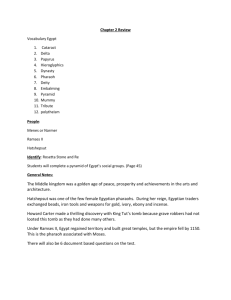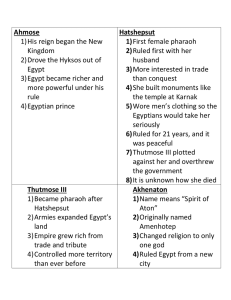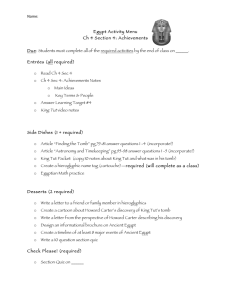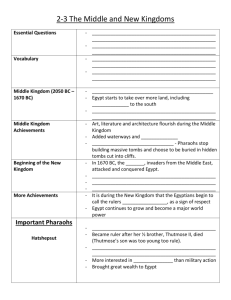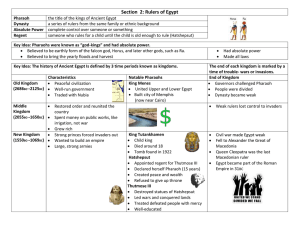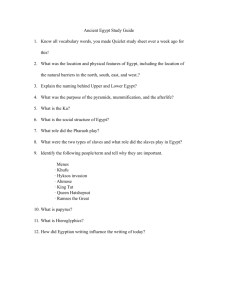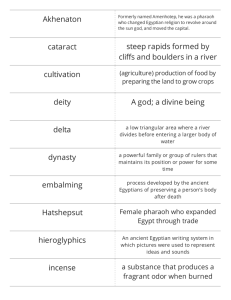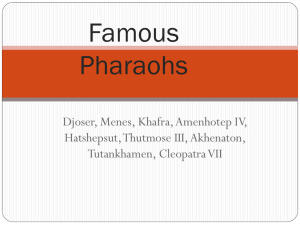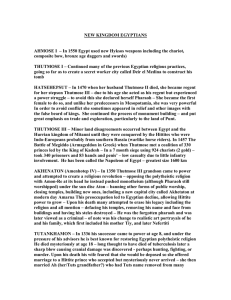New Kingdom Pharaohs: Ahmose I to Ramses II
advertisement
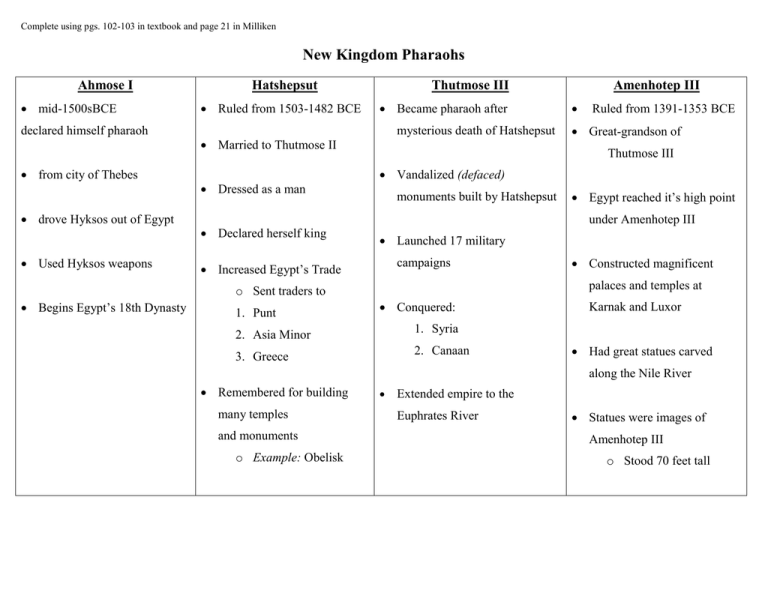
Complete using pgs. 102-103 in textbook and page 21 in Milliken New Kingdom Pharaohs Ahmose I mid-1500sBCE declared himself pharaoh from city of Thebes drove Hyksos out of Egypt Used Hyksos weapons Hatshepsut Ruled from 1503-1482 BCE Thutmose III Became pharaoh after mysterious death of Hatshepsut Married to Thutmose II Dressed as a man Declared herself king Ruled from 1391-1353 BCE Great-grandson of Vandalized (defaced) monuments built by Hatshepsut Egypt reached it’s high point under Amenhotep III Launched 17 military campaigns Increased Egypt’s Trade 1. Punt Thutmose III Constructed magnificent palaces and temples at o Sent traders to Begins Egypt’s 18th Dynasty Amenhotep III Conquered: 2. Asia Minor 1. Syria 3. Greece 2. Canaan Karnak and Luxor Had great statues carved along the Nile River Remembered for building many temples and monuments o Example: Obelisk Extended empire to the Euphrates River Statues were images of Amenhotep III o Stood 70 feet tall Complete using pgs. 102-103, 107, 112-113 in textbook, page 21 in Milliken, page 2.05 in World History New Kingdom Pharaohs Amenhotep IV (Akhenaten) Changed Egyptian religion from polytheistic (worshipping many gods) to monotheistic (worshipping only one god) Tutankamen (King Tut) Ramses II Son of Akhenaten Ruled from 1290 to 1224 BCE Became pharaoh around age 9 Fought the Hittites from Asia Minor, o Died around age 18 Egyptians had to worship Aten o Sun god and creator of the universe o Aten worship ends when Akhenaten dies (Ramses the Great) neither side could win o Resulted in world’s first peace treaty Changed Egypt’s religion back to polytheism Reconquered Canaan Defended Egypt from the Tehenu o Priests and people could pray to many gods o Built a series of forts to prevent Married to Queen Nefertiti 1922 archaeologist Howard Carter future invasion discovered Tut’s tomb Builds city of Akhetaten Tomb was not disturbed by treasure hunters or tomb robbers Built the city of Pi-Ramses (means “house of Ramses”) Egypt loses control of Syria and Canaan under his leadership Tomb was filled with treasures, including: 1. Boxes of jewelry Known as a great warrior and great builder o Built temples at: 2. Robes 1. Karnak 3. Burial mask (made of gold) 2. Luxor 4. Ivory statues 3. Abu Simbel King Tut’s treasures taught us much about Egyptian burial practices and beliefs
